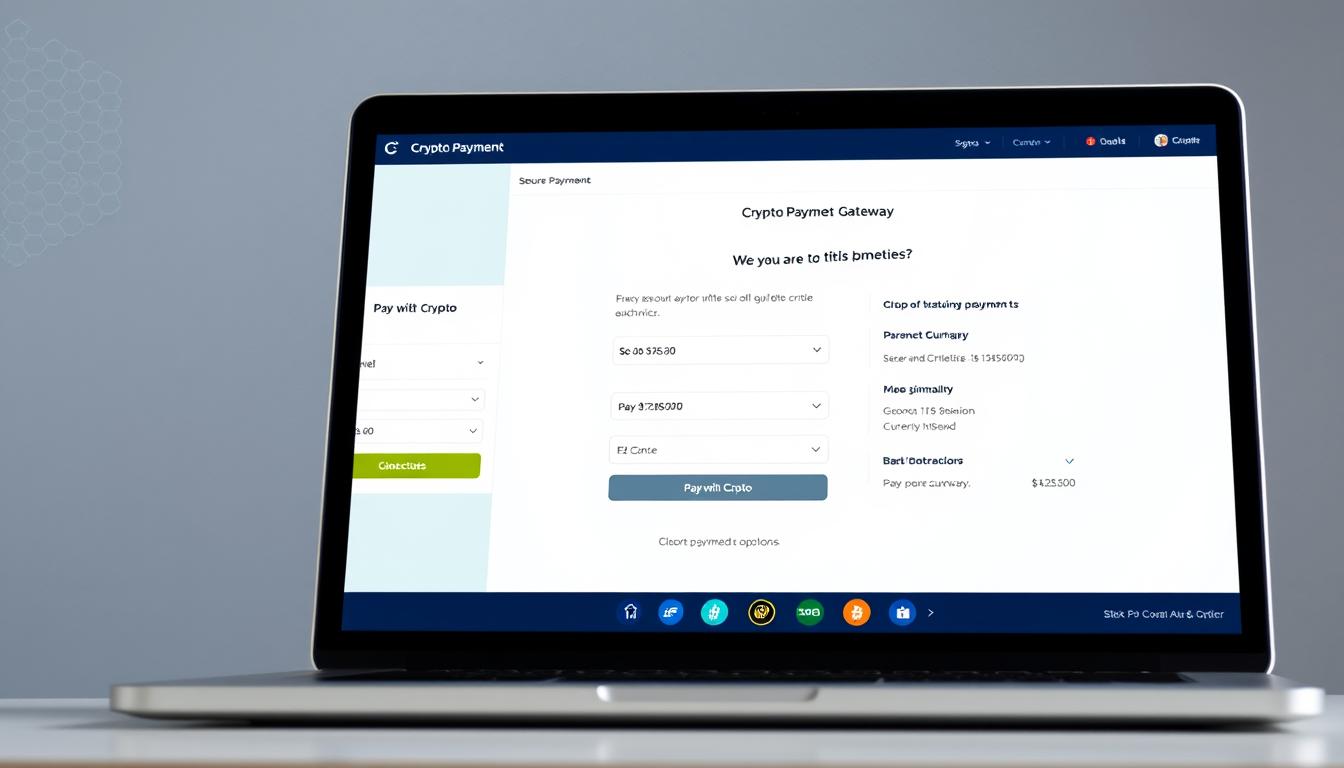Now Reading: Enhancing Blockchain Integration: Discover Interoperability Strategies
- 01
Enhancing Blockchain Integration: Discover Interoperability Strategies
Enhancing Blockchain Integration: Discover Interoperability Strategies

Blockchain interoperability solutions are crucial for the future of blockchain technology, enabling seamless interactions between different blockchain networks. This concept, known as cross-chain interoperability, allows for the creation of interoperable blockchain networks that can communicate and exchange data with each other. By implementing blockchain interoperability solutions, businesses can enhance integration efforts and create a more efficient and connected ecosystem.
As the use of blockchain technology continues to grow, the need for cross-chain interoperability becomes increasingly important. By visiting blockchain for sustainable agriculture solutions, we can see the potential for blockchain to transform industries. The development of interoperable blockchain networks is a key step towards achieving this goal, and it requires a deep understanding of blockchain interoperability solutions and their role in enhancing integration efforts.
The benefits of creating interoperable blockchain networks are numerous, and they have the potential to revolutionize the way businesses operate. By enabling cross-chain interoperability, companies can improve the efficiency and security of their operations, and create new opportunities for growth and innovation. As the use of blockchain technology continues to evolve, the importance of blockchain interoperability solutions will only continue to grow, making it essential for businesses to stay ahead of the curve and invest in interoperable blockchain networks.
Understanding the Fundamentals of Blockchain Interoperability
Blockchain interoperability refers to the ability of different blockchain networks to communicate and exchange information with each other. This is made possible through blockchain interoperability protocols, which enable seamless interaction between disparate blockchain systems. The goal of interoperability is to facilitate the free flow of data and assets between different blockchain networks, thereby creating a more connected and efficient ecosystem.
At its core, blockchain interoperability is about enabling interoperability between blockchains, allowing them to work together in a harmonious and secure manner. This requires the development of standardized blockchain interoperability standards that can be adopted across the industry. By establishing a common framework for interoperability, businesses and organizations can unlock new opportunities for collaboration and innovation.
Defining Cross-Chain Communication
Cross-chain communication is a critical component of blockchain interoperability, enabling different blockchain networks to exchange data and assets in a secure and trusted manner. This is achieved through the use of specialized protocols and algorithms that facilitate communication between disparate blockchain systems.
Core Components of Interoperable Systems
Interoperable systems rely on several key components, including standardized protocols, common data formats, and secure authentication mechanisms. By establishing a common framework for interoperability, businesses and organizations can ensure seamless communication and collaboration between different blockchain networks.
The Business Case for Blockchain Integration
The business case for blockchain integration is clear: by enabling interoperability between different blockchain networks, businesses and organizations can unlock new opportunities for growth, innovation, and collaboration. Whether it’s enabling cross-border payments, facilitating supply chain management, or supporting the creation of new financial instruments, blockchain interoperability has the potential to transform industries and revolutionize the way we do business.
Current Challenges in Blockchain Integration
As the blockchain ecosystem continues to evolve, achieving blockchain interoperability remains a significant challenge. The lack of standardization and compatibility between different blockchain systems hinders the seamless exchange of data and assets. This limitation is a major obstacle to enhancing blockchain connectivity and realizing the full potential of blockchain technology.
The current blockchain landscape is characterized by a multitude of isolated systems, each with its own unique architecture and protocol. This fragmentation makes it difficult to achieve interoperability, as different systems are unable to communicate with each other effectively. To overcome this challenge, it is essential to develop solutions that enable achieving blockchain interoperability and facilitate the exchange of data and assets between different blockchain systems.
Some of the key challenges to enhancing blockchain connectivity include:
- Technical limitations: The lack of standardization and compatibility between different blockchain systems
- Regulatory hurdles: The need for clear regulations and guidelines to govern blockchain integration
- Operational complexities: The difficulty of managing and maintaining multiple blockchain systems
In order to overcome these challenges, it is essential to develop innovative solutions that enable achieving blockchain interoperability and enhancing blockchain connectivity. This can be achieved through the development of standardized protocols, the creation of interoperable blockchain systems, and the implementation of regulatory frameworks that support blockchain integration.
Essential Blockchain Interoperability Solutions for Enterprise Success
For businesses to thrive in a multi-blockchain ecosystem, they need to adopt seamless blockchain interoperability solutions. This enables them to interact with different blockchain networks, exchange data, and conduct transactions efficiently. Interoperable blockchain networks are crucial for enterprise success, as they facilitate collaboration and innovation across industries.
Some key solutions for achieving blockchain interoperability include:
- Cross-Chain Communication Protocols: These protocols enable different blockchain networks to communicate with each other, exchange data, and conduct transactions.
- Smart Contract Integration Methods: Smart contracts can be integrated across different blockchain networks, allowing for automated execution of transactions and agreements.
- Data Exchange Standards: Standardized data exchange formats enable seamless data sharing between different blockchain networks, facilitating collaboration and innovation.
By adopting blockchain interoperability protocols, businesses can unlock new opportunities for growth, collaboration, and innovation. As the blockchain ecosystem continues to evolve, the importance of interoperable blockchain networks will only continue to grow.

Implementing Cross-Chain Asset Transfers
Implementing cross-chain asset transfers is a critical aspect of blockchain interoperability solutions. This process enables the secure and efficient transfer of assets between different blockchain networks, facilitating cross-chain interoperability. To achieve this, several technical and operational considerations must be taken into account.
Some key factors to consider when implementing cross-chain asset transfers include:
- Network architecture and protocol compatibility
- Asset standardization and formatting
- Security measures, such as encryption and access controls
- Scalability and performance optimization
By addressing these factors and leveraging blockchain interoperability solutions, organizations can enable seamless cross-chain interoperability and unlock new opportunities for asset transfer and exchange.
As the use of blockchain technology continues to grow, the importance of cross-chain interoperability will only continue to increase. By implementing effective cross-chain asset transfer solutions, organizations can stay ahead of the curve and capitalize on the benefits of blockchain interoperability solutions.
| Blockchain Network | Asset Type | Transfer Protocol |
|---|---|---|
| Ethereum | ERC-20 tokens | Atomic swaps |
| Bitcoin | BTC | Hash time-locked contracts |
Key Protocols Driving Blockchain Connectivity
Blockchain interoperability protocols are crucial for enabling seamless interaction between different blockchain networks. Interoperability between blockchains allows for the exchange of assets, data, and information, facilitating a more connected and efficient blockchain ecosystem. Blockchain interoperability standards are being developed to ensure compatibility and consistency across various blockchain platforms.
The development of these protocols is driven by the need for blockchain interoperability standards that can facilitate secure and efficient data exchange between different blockchain networks. This is where atomic swaps, bridge protocols, and relay chain mechanisms come into play.
Atomic Swaps and Hash Time-Locked Contracts
Atomic swaps enable the exchange of assets between two parties without the need for a trusted intermediary. This is made possible through the use of hash time-locked contracts, which ensure that the exchange is secure and transparent.
Bridge Protocols and Their Applications
Bridge protocols are designed to facilitate interoperability between blockchains, enabling the transfer of assets and data between different networks. These protocols have a wide range of applications, from cross-chain asset transfers to decentralized finance (DeFi) platforms.
Relay Chain Mechanisms
Relay chain mechanisms are used to enable communication between different blockchain networks. These mechanisms allow for the secure and efficient exchange of data and assets, facilitating blockchain interoperability and enabling new use cases.
By leveraging these key protocols, blockchain networks can achieve greater connectivity and interoperability, paving the way for a more integrated and efficient blockchain ecosystem. As the development of blockchain interoperability protocols continues to evolve, we can expect to see new innovations and applications emerge, driving further growth and adoption of blockchain technology.
| Protocol | Description | Application |
|---|---|---|
| Atomic Swaps | Enables secure and transparent asset exchange | Cross-chain asset transfers |
| Bridge Protocols | Facilitates interoperability between blockchains | Decentralized finance (DeFi) platforms |
| Relay Chain Mechanisms | Enables secure and efficient data exchange | Blockchain interoperability and connectivity |
Security Considerations for Interoperable Networks
When achieving blockchain interoperability, it’s essential to consider the security implications of enabling interaction between different blockchain systems. As organizations strive to enhance blockchain connectivity, they must also prioritize the security of their networks.
To mitigate potential risks, several security measures can be implemented, including:
- Implementing robust authentication and authorization protocols
- Utilizing encryption to protect data in transit and at rest
- Conducting regular security audits and penetration testing
By prioritizing security and taking a proactive approach to mitigating risks, organizations can ensure the secure operation of their interoperable networks, ultimately enhancing blockchain connectivity and achieving their business goals.
As the blockchain ecosystem continues to evolve, it’s crucial for organizations to stay informed about the latest security considerations and best practices for interoperable networks.
Developing Standards for Blockchain Integration
As the adoption of blockchain technology grows, the need for standardized protocols becomes increasingly important. Developing blockchain interoperability standards is crucial for facilitating seamless blockchain interoperability across different networks.
The development of industry-wide protocol standards is a key aspect of creating interoperable blockchain networks. This involves establishing common protocols for data exchange, smart contract integration, and cross-chain communication.
Industry-Wide Protocol Standards
- Establishing common protocols for data exchange
- Developing standards for smart contract integration
- Creating protocols for cross-chain communication
By developing these standards, organizations can ensure that their blockchain networks can communicate and interact with other networks, enabling seamless blockchain interoperability. This, in turn, can facilitate the widespread adoption of blockchain technology and promote the growth of interoperable blockchain networks.
Governance Frameworks
Governance frameworks play a critical role in ensuring the security and integrity of blockchain networks. By establishing clear governance frameworks, organizations can ensure that their blockchain networks are compliant with regulatory requirements and industry standards.
Performance Optimization Techniques
When it comes to enhancing blockchain connectivity, performance optimization techniques play a crucial role in ensuring the efficiency, scalability, and reliability of interoperable blockchain networks. To achieve this, several strategies can be employed, including achieving blockchain interoperability through the use of standardized protocols and frameworks.
Some key techniques for optimizing performance include:
- Implementing efficient data exchange protocols to reduce latency and increase throughput
- Utilizing scalable architecture to support high volumes of transactions and interactions
- Optimizing smart contract execution to minimize gas costs and improve overall network performance
By implementing these techniques, organizations can enhance blockchain connectivity and achieve blockchain interoperability, ultimately leading to improved overall performance and increased adoption of blockchain technology.
Real-World Applications of Interoperable Blockchains
Interoperable blockchain networks are being increasingly adopted across various industries, enabling seamless communication and data exchange between different blockchain systems. This has led to the development of innovative solutions that leverage blockchain interoperability solutions to drive business growth and improve efficiency. One of the key areas where interoperable blockchains are making a significant impact is in financial services integration, where cross-chain interoperability enables the transfer of assets and data between different financial institutions and blockchain networks.
In the supply chain industry, interoperable blockchain networks are being used to track and verify the origin and movement of goods, ensuring transparency and accountability throughout the supply chain. This is achieved through the use of blockchain interoperability solutions that enable data exchange and cross-chain communication between different supply chain stakeholders. Additionally, in the healthcare sector, interoperable blockchains are being used to enable secure and efficient exchange of patient data between different healthcare providers, improving patient care and outcomes.

Some of the key benefits of using interoperable blockchain networks include:
- Improved efficiency and reduced costs through automated data exchange and cross-chain communication
- Enhanced security and transparency through the use of blockchain technology and cross-chain interoperability
- Increased innovation and competitiveness through the development of new blockchain-based solutions and services
As the use of interoperable blockchain networks continues to grow, we can expect to see even more innovative solutions and applications emerge, driving business growth and improving efficiency across various industries. By leveraging blockchain interoperability solutions and cross-chain interoperability, businesses can unlock new opportunities and stay ahead of the competition in an increasingly interconnected and interoperable world.
| Industry | Application | Benefits |
|---|---|---|
| Financial Services | Asset transfer and data exchange | Improved efficiency and reduced costs |
| Supply Chain | Tracking and verification of goods | Increased transparency and accountability |
| Healthcare | Secure exchange of patient data | Improved patient care and outcomes |
Testing and Validation Strategies
When achieving blockchain interoperability, it is crucial to implement thorough testing and validation strategies. This ensures the reliability, security, and performance of interoperable blockchain networks. By enhancing blockchain connectivity, businesses can unlock new opportunities for collaboration and innovation.
To guarantee the integrity of blockchain interoperability solutions, the following steps should be taken:
- Conduct thorough testing of cross-chain communication protocols
- Validate smart contract integration methods
- Ensure data exchange standards are met
By prioritizing testing and validation, organizations can mitigate risks and ensure seamless enhancing blockchain connectivity. This, in turn, facilitates the achieving blockchain interoperability necessary for widespread adoption.
Ultimately, a well-planned testing and validation strategy is essential for the success of blockchain interoperability solutions, enabling businesses to reap the benefits of enhancing blockchain connectivity and achieving blockchain interoperability.
| Testing Strategy | Validation Method |
|---|---|
| Cross-Chain Communication Protocols | Smart Contract Integration |
| Data Exchange Standards | Security Audits |
Scaling Interoperable Blockchain Networks
As the adoption of blockchain technology continues to grow, the need for scalable and efficient interoperable blockchain networks becomes increasingly important. This is where blockchain interoperability protocols come into play, enabling seamless communication and data exchange between different blockchain systems. Interoperability between blockchains is crucial for unlocking the full potential of blockchain technology, and blockchain interoperability standards are being developed to ensure consistency and compatibility across different networks.
To achieve scalability, several strategies can be employed, including layer 2 solutions, sharding implementation, and network optimization methods. These approaches can help improve the performance and efficiency of interoperable blockchain systems, enabling them to handle increased traffic and transaction volumes. By leveraging these strategies, businesses and organizations can unlock the benefits of blockchain technology, including enhanced security, transparency, and cost savings.
Some key considerations for scaling interoperable blockchain networks include:
- Implementing layer 2 solutions to increase transaction capacity and reduce latency
- Utilizing sharding techniques to divide the network into smaller, more manageable segments
- Optimizing network configuration and parameters to improve performance and efficiency
By adopting these strategies and leveraging blockchain interoperability protocols, businesses and organizations can create scalable and efficient interoperable blockchain networks that meet their evolving needs and drive innovation in the industry.
| Strategy | Description | Benefits |
|---|---|---|
| Layer 2 Solutions | Implementing secondary frameworks to increase transaction capacity | Improved scalability, reduced latency |
| Sharding Implementation | Dividing the network into smaller segments for better management | Enhanced performance, increased security |
| Network Optimization | Configuring network parameters for optimal performance | Improved efficiency, reduced costs |
Cost Management and ROI Considerations
When enhancing blockchain connectivity, it’s essential to consider the cost management and ROI implications of implementing and maintaining interoperable blockchain networks. Achieving blockchain interoperability can lead to significant cost savings and revenue opportunities, but it’s crucial to carefully evaluate the financial implications of such solutions.
Some key factors to consider when evaluating the cost management and ROI of blockchain interoperability solutions include:
- Infrastructure costs: The cost of setting up and maintaining the necessary infrastructure to support interoperable blockchain networks.
- Transaction fees: The fees associated with transactions between different blockchain networks.
- Smart contract development: The cost of developing and deploying smart contracts to facilitate cross-chain communication.
- Security measures: The cost of implementing and maintaining robust security measures to protect against potential threats and vulnerabilities.
By carefully evaluating these factors and considering the potential benefits of enhancing blockchain connectivity and achieving blockchain interoperability, organizations can make informed decisions about the cost management and ROI of their blockchain interoperability solutions.

Ultimately, the key to successful cost management and ROI consideration is to strike a balance between the costs and benefits of blockchain interoperability solutions. By doing so, organizations can unlock the full potential of enhancing blockchain connectivity and achieving blockchain interoperability, while also ensuring a strong ROI and long-term sustainability.
| Cost Factor | Description |
|---|---|
| Infrastructure | The cost of setting up and maintaining the necessary infrastructure to support interoperable blockchain networks. |
| Transaction Fees | The fees associated with transactions between different blockchain networks. |
| Smart Contract Development | The cost of developing and deploying smart contracts to facilitate cross-chain communication. |
Charting the Future of Blockchain Connectivity
As the blockchain ecosystem continues to evolve, the need for seamless blockchain interoperability solutions has become increasingly crucial. Emerging trends, such as the rise of cross-chain interoperability and the development of interoperable blockchain networks, promise to reshape the way businesses and industries leverage the power of distributed ledger technology.
With the ongoing advancements in cross-chain communication protocols, the integration of various blockchain platforms will become more streamlined, enabling greater flexibility and efficiency. Innovations in bridge protocols and relay chain mechanisms are poised to facilitate the secure exchange of assets and data across different blockchain networks, opening up new avenues for cross-industry collaboration and innovation.
As the industry continues to address challenges related to security, scalability, and compliance, the future of blockchain connectivity will be defined by the adoption of standardized protocols, robust governance frameworks, and comprehensive testing and validation strategies. By embracing these advancements, businesses can unlock the full potential of blockchain technology and drive transformative change across a wide range of sectors.
FAQ
What is blockchain interoperability?
Blockchain interoperability refers to the ability of different blockchain networks to communicate, exchange data, and interact with one another seamlessly. It enables the creation of a connected and integrated blockchain ecosystem where information and assets can flow freely across various blockchain platforms.
Why is blockchain interoperability important?
Blockchain interoperability is crucial for the widespread adoption and scalability of blockchain technology. It allows organizations to leverage the unique capabilities of different blockchain networks, enabling them to build more comprehensive and flexible solutions. Interoperability helps to overcome the limitations of siloed blockchain ecosystems and facilitates the development of innovative applications that can operate across multiple blockchain platforms.
What are the core components of an interoperable blockchain system?
The core components of an interoperable blockchain system include standardized protocols, communication bridges, data exchange mechanisms, and shared governance frameworks. These components work together to enable secure and efficient cross-chain interactions, facilitating the flow of information, assets, and smart contract functionalities between different blockchain networks.
What are the main challenges in achieving blockchain interoperability?
Some of the key challenges in achieving blockchain interoperability include technical compatibility between disparate blockchain protocols, data standardization, regulatory complexities, scalability limitations, and the need for robust security measures to protect against cross-chain vulnerabilities. Overcoming these challenges requires the development of comprehensive interoperability solutions and industry-wide collaboration.
What are the essential blockchain interoperability solutions?
Essential blockchain interoperability solutions include cross-chain communication protocols (e.g., Cosmos, Polkadot), smart contract integration methods (e.g., atomic swaps, bridge protocols), and data exchange standards (e.g., InterPlanetary File System – IPFS). These solutions enable seamless interactions, asset transfers, and information sharing between different blockchain networks, paving the way for a more connected and integrated blockchain ecosystem.
How can blockchain interoperability enhance enterprise success?
Blockchain interoperability can enhance enterprise success in several ways, including:
– Enabling the integration of disparate blockchain-based systems, allowing organizations to leverage the unique capabilities of different blockchain networks
– Facilitating the development of cross-chain applications and the exchange of data and assets across multiple blockchain platforms
– Improving operational efficiency, reducing costs, and enhancing transparency and traceability through seamless blockchain integration
– Expanding the potential use cases and business opportunities for enterprises by unlocking new possibilities enabled by interoperable blockchain networks.
What are the key security considerations for interoperable blockchain networks?
Key security considerations for interoperable blockchain networks include protecting against cross-chain vulnerabilities, ensuring the integrity of data and asset transfers, implementing robust access controls and identity management systems, and developing comprehensive risk mitigation strategies. Maintaining the security and resilience of interoperable blockchain networks is crucial to building trust and driving widespread adoption.
How can interoperable blockchain networks be scaled effectively?
Scaling interoperable blockchain networks can be achieved through the implementation of layer 2 solutions, sharding techniques, and network optimization methods. Layer 2 solutions, such as state channels and sidechains, can help to improve the scalability and performance of interoperable blockchain systems. Sharding can partition the network into multiple segments, enabling parallel processing and increased throughput. Network optimization methods, including load balancing and transaction batching, can also contribute to the scalability of interoperable blockchain networks.
What are the real-world applications of interoperable blockchains?
Interoperable blockchains have a wide range of real-world applications, including:
– Financial services integration: Enabling the seamless transfer of assets and the execution of cross-chain transactions
– Supply chain solutions: Facilitating the tracking and tracing of goods across multiple supply chain partners
– Healthcare data exchange: Enabling the secure and private sharing of medical records and patient data between different healthcare providers
– Decentralized finance (DeFi) applications: Allowing users to access a diverse range of financial services and products across multiple blockchain platforms
– Internet of Things (IoT) ecosystems: Enabling the integration of IoT devices and the exchange of data between different blockchain-based IoT platforms.















